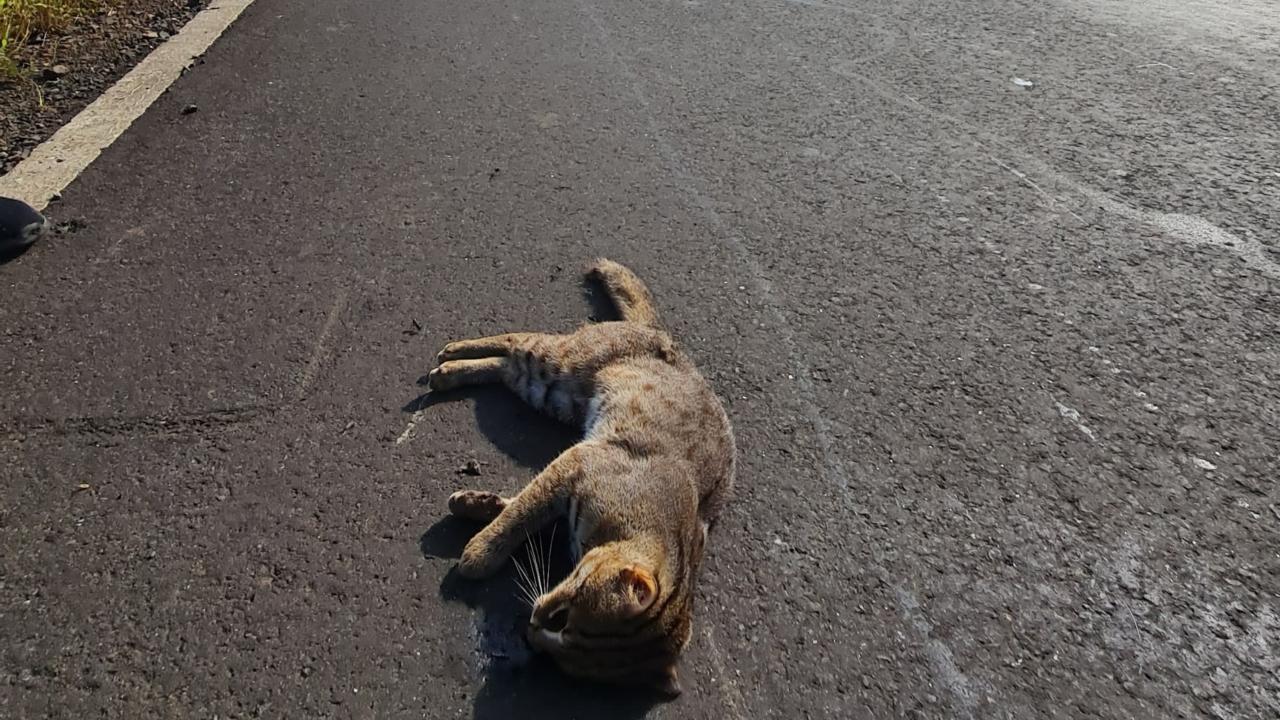Mumbai-based wildlife photographer Satyajit Mane and Mangaon-based wildlife researcher Shantanu Kuveskar saw the dead cat lying on the road

Rusty-Spotted Cat. Pic/Shantanu Kuveskar
In an unfortunate incident, the world's smallest wild cat—the Rusty-Spotted Cat—died after being hit by an unknown speeding vehicle on the Mangaon-Nizampur road heading towards Raigad Fort in Maharashtra.
Mumbai-based wildlife photographer Satyajit Mane and Mangaon-based wildlife researcher Shantanu Kuveskar saw the dead cat lying on the road.
Shantanu Kuveskar feels that the need of the hour is to drive carefully while passing through forest patches.
On the morning of October 14, photographers Satyajit Mane from Mumbai and wildlife researcher Shantanu Kuveskar were on their way to Raigad Fort when they spotted a wildcat lying dead in the middle of the road, approximately five to six kilometers from the fort.
Stopping their vehicle, Shantanu and Satyajit got out and were shocked to see that it was a Rusty-Spotted Cat.
Wildlife researcher Shantanu Kuveskar said, "It appears the wildcat met with an accident in the early morning hours, as it was lying on the road with signs of dried blood on its face. Rarely seen, this wildcat, identified as 'Waghati' in Marathi, is known to be the smallest wild cat species in the world."
Shantanu emphasized that this incident highlights the rich biodiversity of the Raigad Fort area and its sensitivity from a wildlife perspective.
"There have been rare sightings of the Rusty-Spotted Cat in various regions of the Raigad Fort vicinity and Mangalgaon taluka, with previous sightings of even rarer 'leopard cats,'" he said.
He urged everyone to drive slowly on forest roads to avoid accidents with wildlife.
The Waghati, also known as the Rusty-Spotted Cat, is extremely shy and primarily nocturnal, feeding on small mammals, reptiles, and insects at night. During the rainy season, it is rarely seen, as food is abundantly available in bushes and grass. This wildcat's habitat is spread across many regions in India, and its elusive nature and small size make sightings very rare.
 Subscribe today by clicking the link and stay updated with the latest news!" Click here!
Subscribe today by clicking the link and stay updated with the latest news!" Click here!










